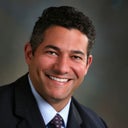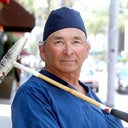I was wondering which method has a less warping rate for rhinoplasty: Rib or Ear cartiledge. I want to increase my bridge height and my tip but only wanting to use my rib as last resort because of the scarring and pain. So i'm hoping to use both my ears and septum if i have too. However i heard that using both ears is actually more painful then extracting rib.. is this true? What are your thoughts.
Answers (17)
From board-certified doctors and trusted medical professionals
Dr. David C. Pearson, MD

Dr. David C. Pearson, MD
Board Certified Facial Plastic Surgeon
Answer
Dr. Jeffrey E. Schreiber, MD, FACS

Dr. Jeffrey E. Schreiber, MD, FACS
Board Certified Plastic Surgeon
Answer
Dr. Michael A. Persky, MD

Dr. Michael A. Persky, MD
Facial Plastic Surgeon
Answer
Dr. Otto Joseph Placik, MD

Dr. Otto Joseph Placik, MD
Board Certified Plastic Surgeon
Answer
Dr. John M. Hilinski, MD

Dr. John M. Hilinski, MD
Board Certified Facial Plastic Surgeon
Answer
Dr. Toby Mayer, MD

Dr. Toby Mayer, MD
Board Certified Facial Plastic Surgeon
Answer
Dr. Eric M. Joseph, MD

Dr. Eric M. Joseph, MD
Board Certified Facial Plastic Surgeon
Answer
Dr. Tanveer Janjua, MD

Dr. Tanveer Janjua, MD
Board Certified Facial Plastic Surgeon
Answer
Dr. William Portuese, MD
Dr. William Portuese, MD
Board Certified Facial Plastic Surgeon
Answer
Dr. Philip Young, MD
Dr. Philip Young, MD
Board Certified Otolaryngologist
Answer
More Rhinoplasty Questions
See all Rhinoplasty Q&AWE SEND PRETTY
EMAILS
What’s trending? Who’s turning heads? Which TikTok myths need busting? We’ve got you. No fluff, no gatekeeping—just real talk. Get our free, unfiltered newsletter.